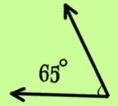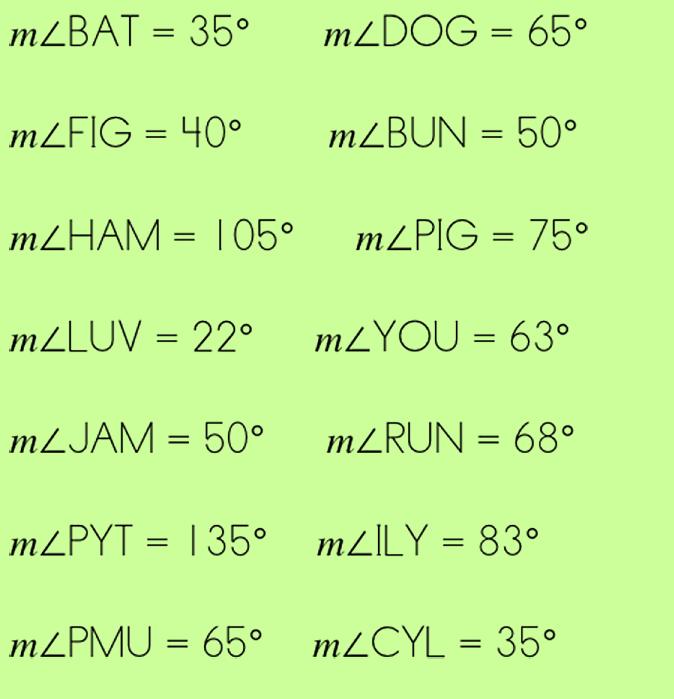 |
||||
 |
||||
©2009–2016 Sherry Skipper Spurgeon. All Rights Reserved. |
||
Did you think that you had already learned the names of all the angles? Ha! Here are some more! |
||
 |
||||||
complementary angles: two angles whose sum is 90°. In these two angles, if you add the angle measures, you find that 25° + 65° = 90° so these angles are complementary angles. |
||||||
 |
||||||
supplementary angles: two angles whose sum is 180°. In these two angles, if you add the angle measures, you find that 50° + 130° = 180° so these angles are complementary angles. |
|||||
 |
|||||
 |
|||||
straight angle: an angle that measures exactly 180°. |
||||
 |
 |
|||
Let's see…let's take a look at some angles to see if we 'get' the concept, okay? Here's a bunch of angles with their measures. Let's see if we can understand Complementary and Supplementary angles based on the definitions above. |
|
 |
||
Now, are you ready for the NEXT type of angles? Next page… |
||